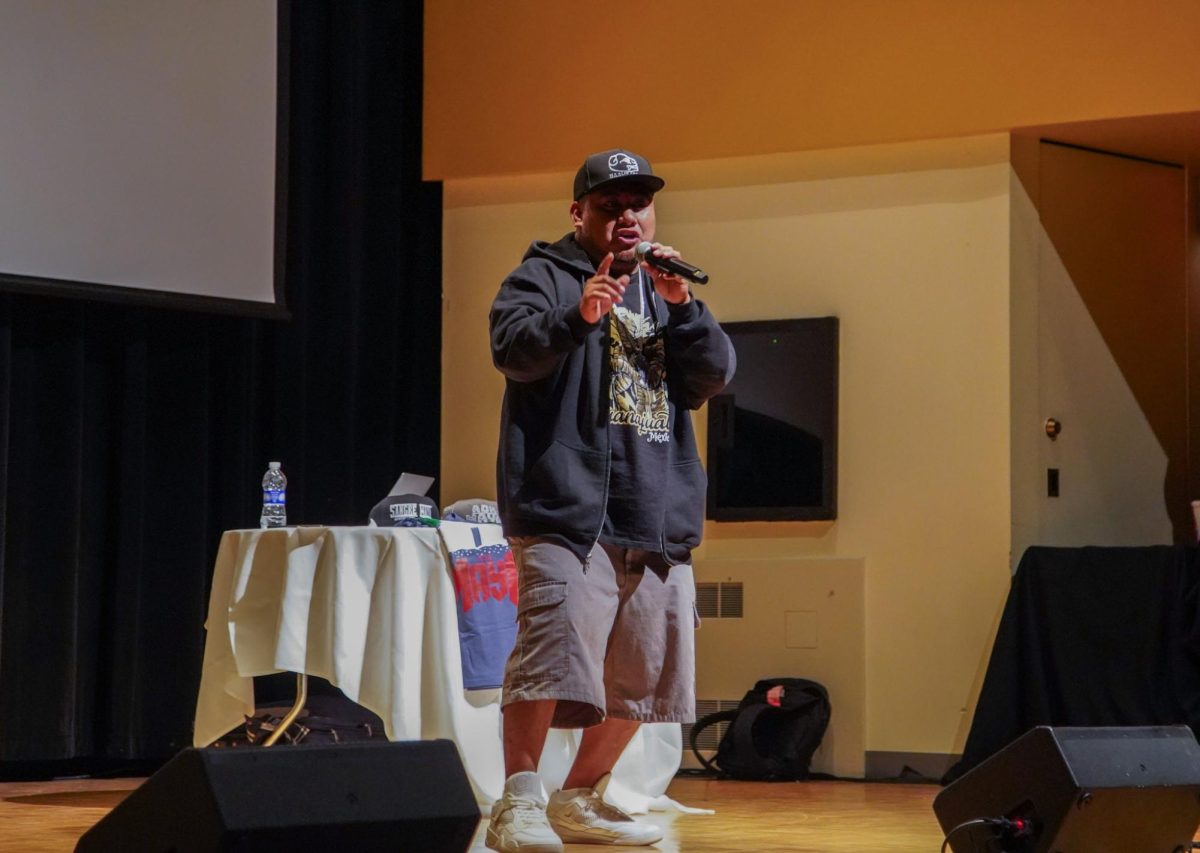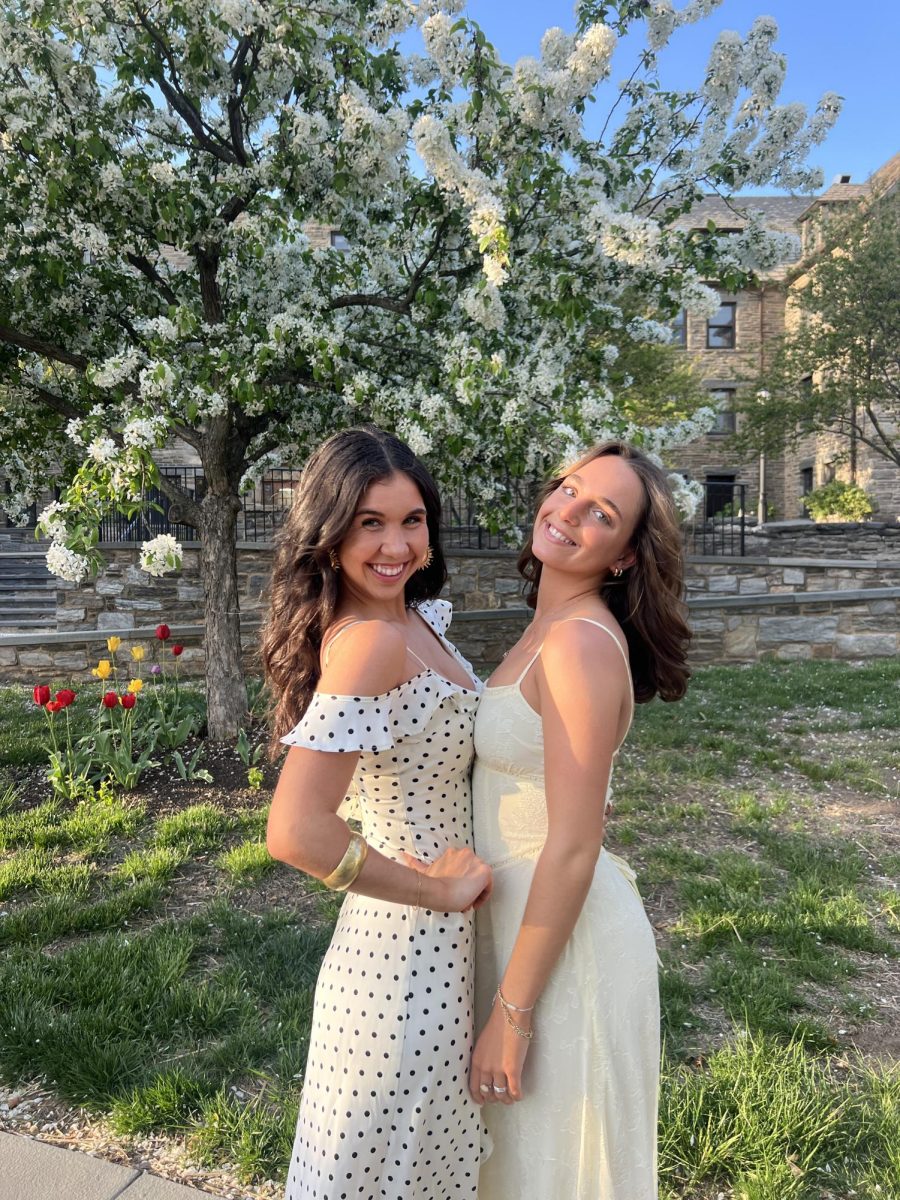As melodic notes filled the Connelly Cinema, cultural pride was celebrated with Mayan rapper Jesús Cristóbal Pat Chable, otherwise known as Pat Boy, on Thursday, Nov. 16. Pairing a musical performance with a conversation afterwards, Pat Boy talked of his journey into the musical world and the challenges he has faced as an indigenous rapper. With a recent appearance on the soundtrack of Marvel Studios’ Black Panther: Wakanda Forever, themes of perseverance and authenticity were found within his preformed music and inspiring words.
Growing up in a small village in Mexico, Pat Boy was surrounded by a community that was built upon the Mayan language, and he was only exposed to English when attending primary school. Throughout his youth he faced discrimination, and it would only grow as he developed a career in the music industry. However, utilizing his identity and cultural background as a source of inspiration for his music, he looked to celebrate the generations before him while catalyzing those to come, according to The Guardian.
With Pat Boy’s primary focus on paying tribute to his Mayan culture and demonstrating the power of music, Ludwig Göransson, film composer for Black Panther: Wakanda Forever, saw him as a sound fit for the movie’s soundtrack. With Mayan soldiers featured in the Marvel Studios movie, Göransson selected Pat Boy’s music to blend sound and culture together, according to The Guardian.
This emphasis on sharing parts of his Mayan culture continued as Pat Boy rapped numerous songs for the crowded Connelly Cinema this past Thursday night. As students cheered, and Pat Boy took the stage, the rapper performed select tracks in his native tongue. Often weaving in themes of Mayan presence and strength, Pat Boy hoped to empower those in the audience while also conveying a story of the Mayan people.
While performing, Pat Boy engaged with members of the crowd, inviting people up to dance and express themselves. Freshman Sophie Trinh commented on the impact this gesture had on her as she watched from the crowd.
“When watching Pat Boy perform and involve those in the crowd, I thought it was a really special way to share a piece of his culture,” Trinh said. “With people dancing on stage and later singing with him, it made me happy to see communities become drawn together and bonded.”
After his time on stage, Pat Boy was joined by associate professor and director of Latin American studies program Raúl Diego Rivera Hernández. Discussing his life growing up and its impact on his music career, Pat Boy explained how he discovered himself through music and hoped to utilize this to impact those in the upcoming generation.
The artist also went into detail on the work he has done with Mayan and non-Mayan children and his goals to aid in their education about their ancestors and cultural history. Discussing music as a tool to excavate this past and pave a future, Pat Boy’s conversation with Hernández inspired freshman Avery Brown, who was touched by his work and impact on the community.
“I think it is so important to become in touch with our pasts and now in an age that has this type of technology at our fingertips, I admire Pat Boy’s drive to help others discover themselves and learn about their pasts through music and community involvement,” Brown said.
Framing his journey as one molded by music and the power it has to impact and change, Pat Boy concluded with his gratitude toward the life it guided him to. With music as a guide to empower those who feel small surrounding the world, Pat Boy expressed his continuity in being a representative of the Mayan culture and a pioneer for those who remain silent.







